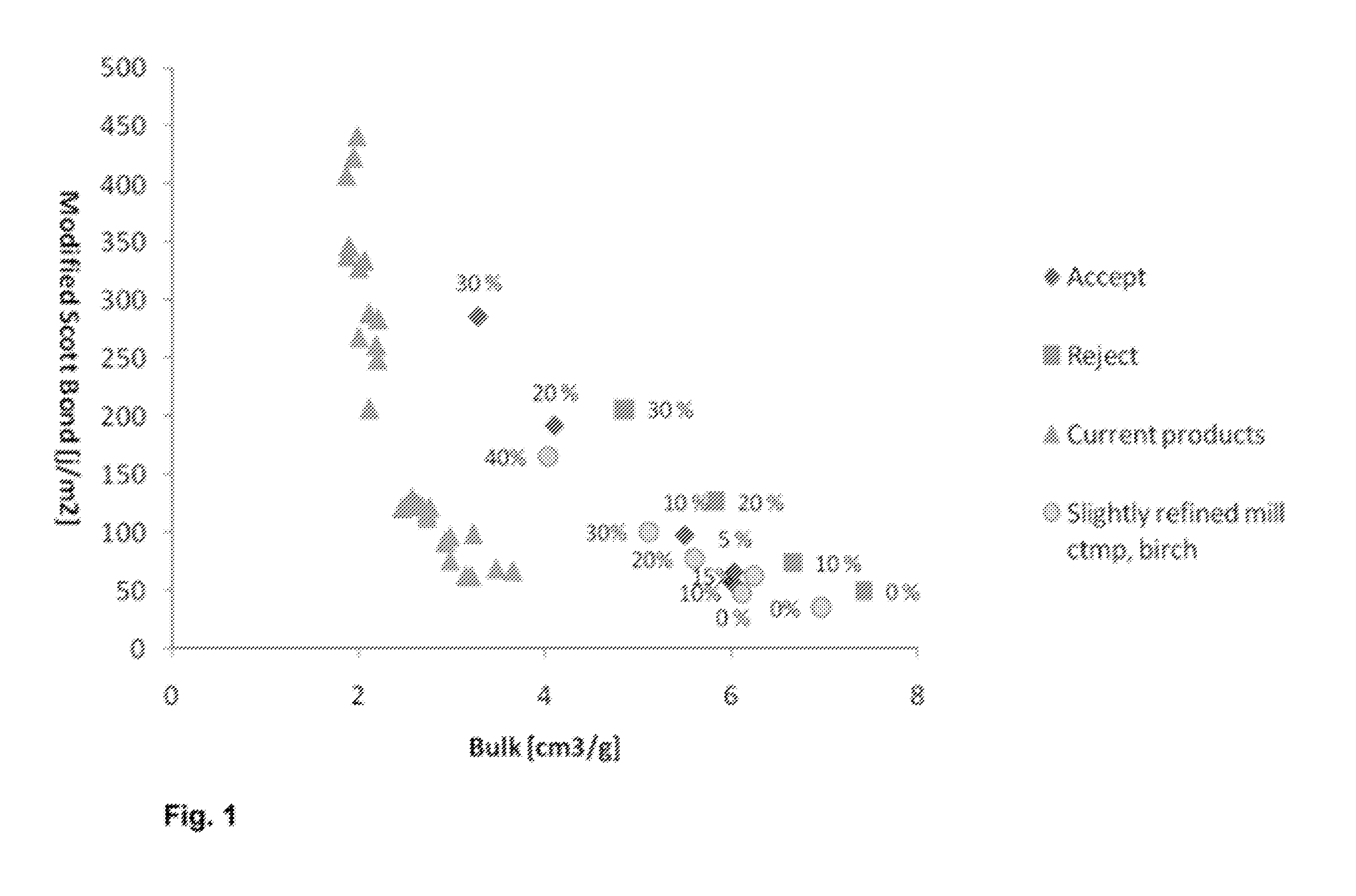Fibrous web of paper or board and method of making the same
a fiber web and paper board technology, applied in the field of fiber web of paper or board and the same, can solve the problems of loss of elastic modulus (“softness”) and internal strength, negative influence of surfactants used in the foaming process, and increase the energy required for drying, etc., to achieve the effect of increasing strength and low density
- Summary
- Abstract
- Description
- Claims
- Application Information
AI Technical Summary
Benefits of technology
Problems solved by technology
Method used
Image
Examples
examples
[0061]Foam laid handsheets of a size 38.5 cm×26.5 cm were made by the following procedure: foam was produced by mixing water and sodium dodecyl sulphate (SDS) as a surface active agent in ratio 0.15-0.2 g / l with a drilling machine (3500 rpm) as far as the air content of foam is 60-70%. The target air content of foam was determined by the foaming set-up; when the foam reaches the target air content the level of the foam surface does not rise anymore and the mixing starts to decrease the bubble size of the foam. When the foam was ready a fiber suspension comprising CTMP and NFC (Daicel KY-100G, 10.7%) was mixed with the prefabricated foam. Mixing was continued until the target air content was reached again. In stable condition the distances between fibrous particles in the foam remained constant and no flocculation happened. After that the foam was decanted into a handsheet mold and filtrated through a wire using an exhauster and a vacuum chamber. The wire was of the type conventional...
PUM
| Property | Measurement | Unit |
|---|---|---|
| pressure | aaaaa | aaaaa |
| pressure | aaaaa | aaaaa |
| length | aaaaa | aaaaa |
Abstract
Description
Claims
Application Information
 Login to View More
Login to View More - R&D
- Intellectual Property
- Life Sciences
- Materials
- Tech Scout
- Unparalleled Data Quality
- Higher Quality Content
- 60% Fewer Hallucinations
Browse by: Latest US Patents, China's latest patents, Technical Efficacy Thesaurus, Application Domain, Technology Topic, Popular Technical Reports.
© 2025 PatSnap. All rights reserved.Legal|Privacy policy|Modern Slavery Act Transparency Statement|Sitemap|About US| Contact US: help@patsnap.com

